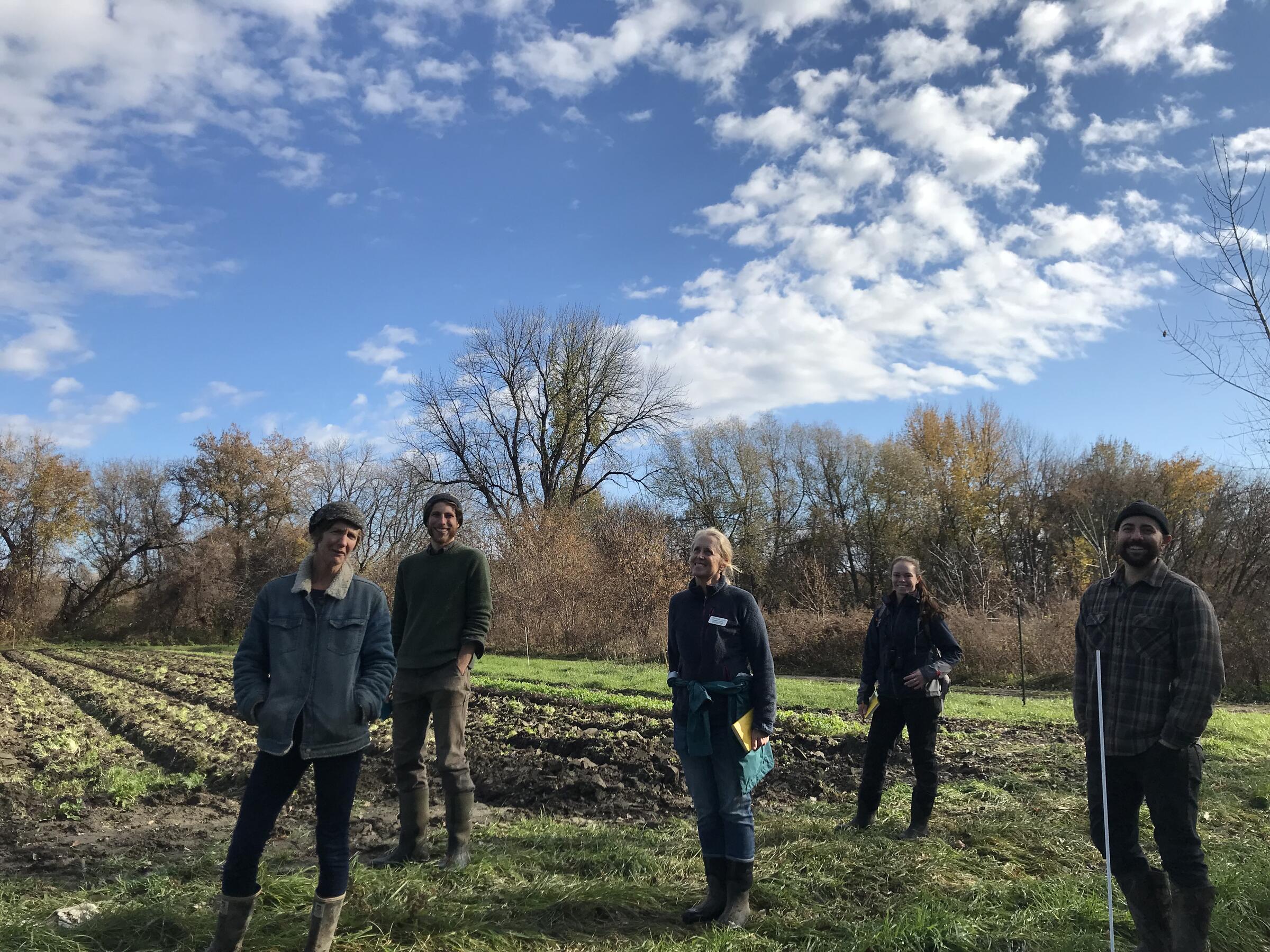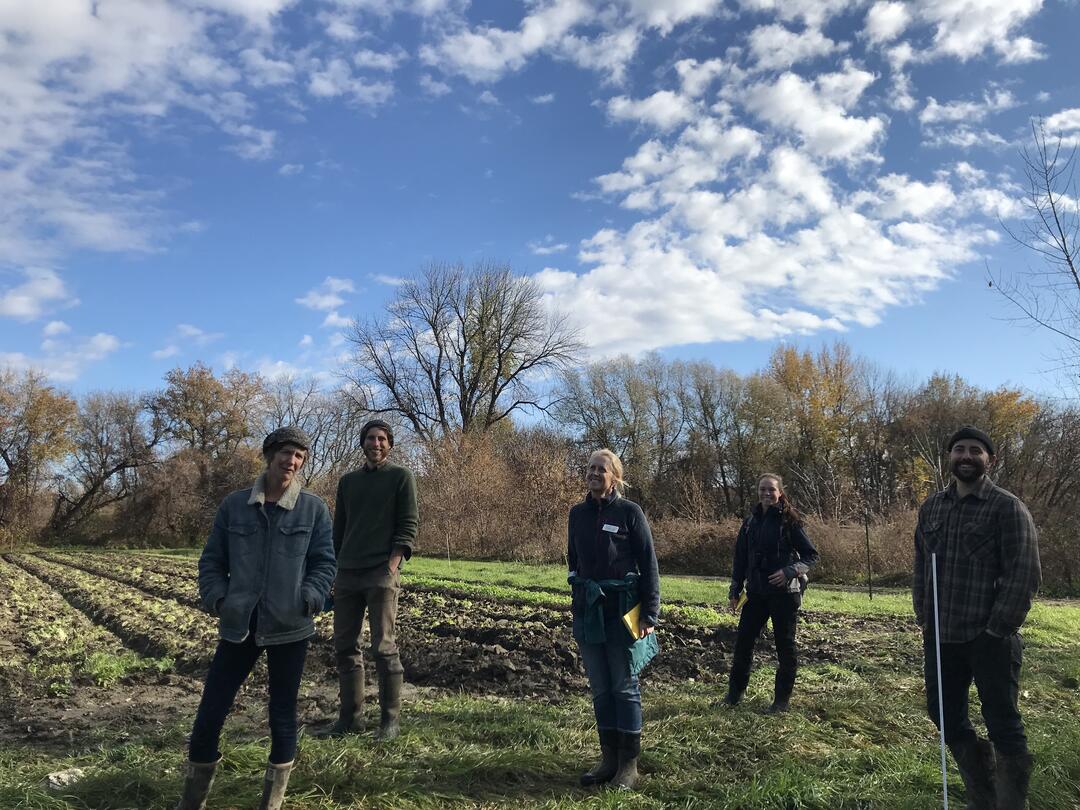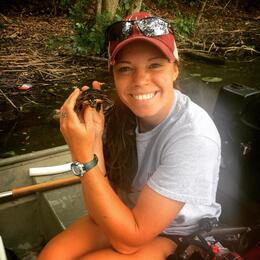Written by Conservation Research Fellow, Cassie Wolfanger. This fellowship is generously supported by Audubon Vermont and the Lake Champlain Sea Grant Institute.
Over the last 30 years, the Intervale Center in Burlington, Vermont has created a nationally recognized incubator model for strengthening local community food systems and land sustainability on a 360-acre campus of farmland, trails, and open spaces along the Winooski River. A valuable combination of habitat heterogeneity, a native plant nursery on-site, flowering crops from agricultural working lands, sandy soils ideal for ground nesting bees, and warmer and more stable temperatures in the Champlain Valley relative to the rest of the state of Vermont, all contribute to high abundance and diversity of pollinators and birds enjoyed there.
Naturally, Audubon Vermont and the Gund Institute at the University of Vermont were ecstatic to connect with Intervale folks last year through our Bird and Bee Friendly Farming initiative and see some of the ideas come to fruition this spring. Duncan Murdoch, Natural Areas Stewardship Coordinator for the Intervale Center, put it well “working together on enhancing bird and pollinator habitat is in perfect alignment with our vision of creating and supporting joyful, vibrant human and natural communities.”
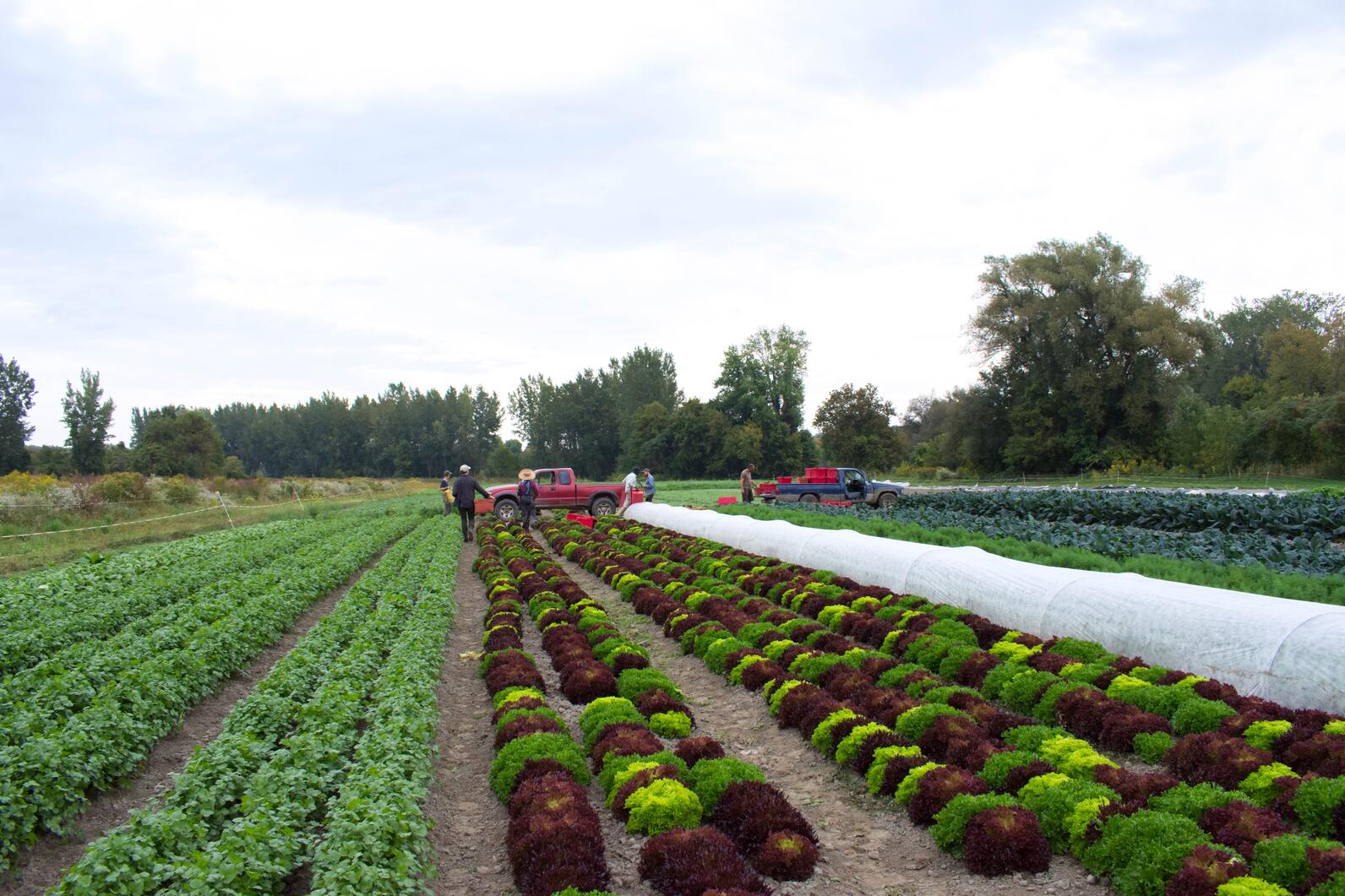
The Intervale Conservation Nursery supplies many of the in-state stem stock for restoration projects in Vermont, but sometimes it takes looking no further than inward to find opportunities for improvement. Some of what the Intervale Center and its farmers already do supports birds and pollinators (e.g, organic, crop diversity, invasive vegetation control), but we wanted to identify small adjustments to current practices to increase foraging and breeding habitat potential and focused specifically on enhancing marginal areas out of production. These are spaces like field edges, hedgerows, and fallow fields as well as forest patches and riparian areas. The presence of structurally heterogeneous hedgerows that incorporate a mix of native tree, shrub, and perennial species can increase the abundance and diversity of pollinator and bird species that in turn provide important on-farm services, such as crop pollination and pest control.
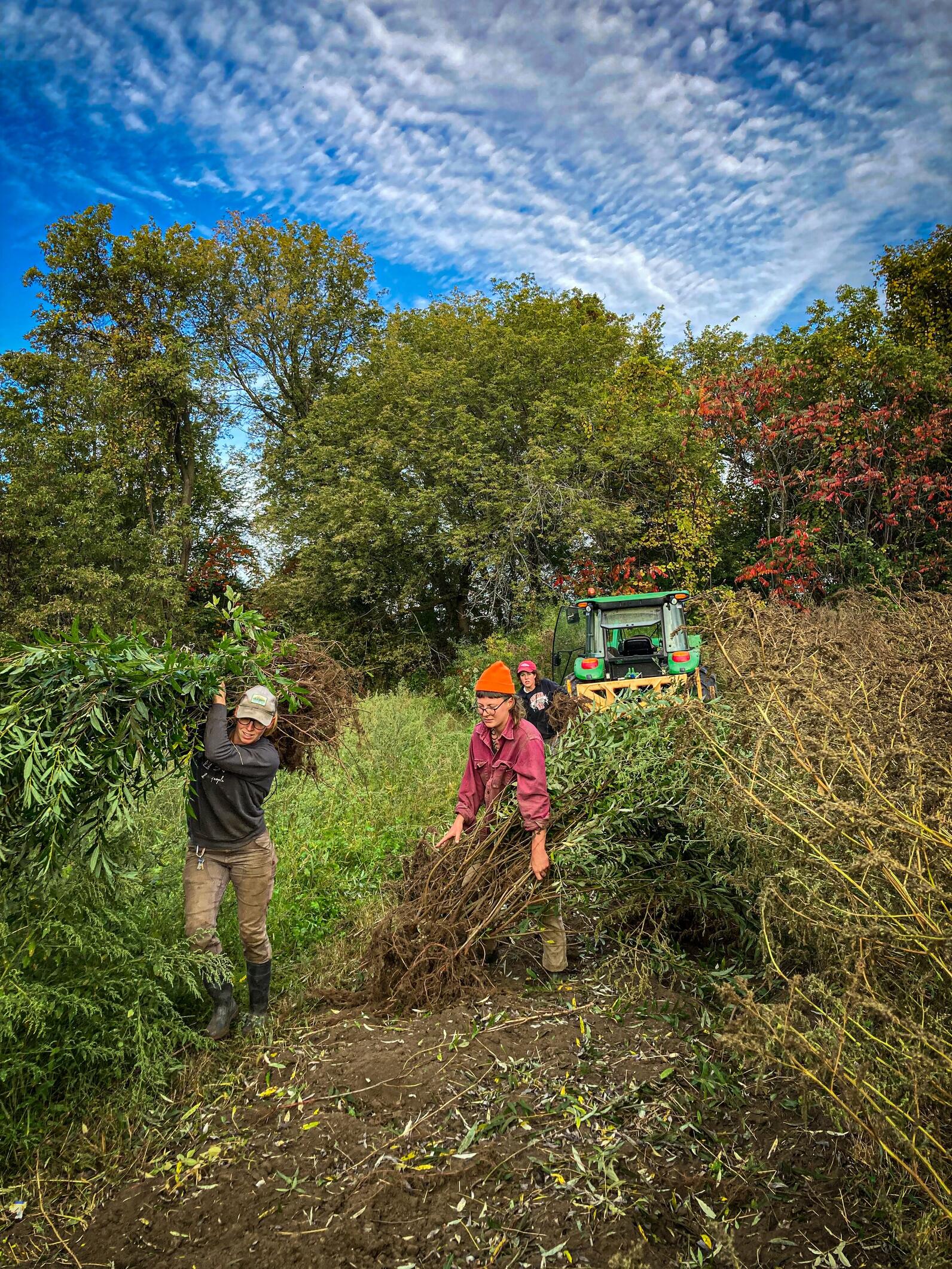
After a habitat assessment at the Intervale Center in summer of 2021, Audubon Vermont and Gund came up with a series of recommendations for the farmers and land management crews, which included optimal mowing regimes, favorite ‘superstar’ native plants, pollinator-friendly cover crop seed mixes, structurally diversifying hedgerows, and ensuring resources were available throughout all seasons with early-, mid-, and late-bloomers.
We noticed that resources were not evenly distributed spatially across the property and there were several small and irregular-shaped areas adjacent to fields that were not being used, likely because they were too small, shady, or wet to be reliable. A few great native herbaceous plants like goldenrod, jewelweed, Joe Pye weed, and milkweed naturally occupied these areas, but non-native invasive plants like purple loosestrife were also creeping in. Importantly, we noted that beneficial shrubs such as willows, dogwoods, alders, and viburnums were absent outside the nursery and could enhance other areas.
To our delight, Duncan at the Intervale Center and several farms including Digger’s Mirth Collective and the Intervale Community Farm, were game to make some simple changes and plant marginal areas in unused field edges. “We used to cultivate there, but years ago decided it was too prone to flooding. Since then, our approach has been pretty hands off in these areas, so it was exciting to hear suggestions on how to more actively manage it” said Hilary Martin of Digger’s Mirth Collective. “Our plan for this spring was to throw in a handful of shrubs ourselves, but Duncan led a planting re-design and we now have nearly an acre planted with over 100 native trees and shrubs to support the biodiversity around us!”
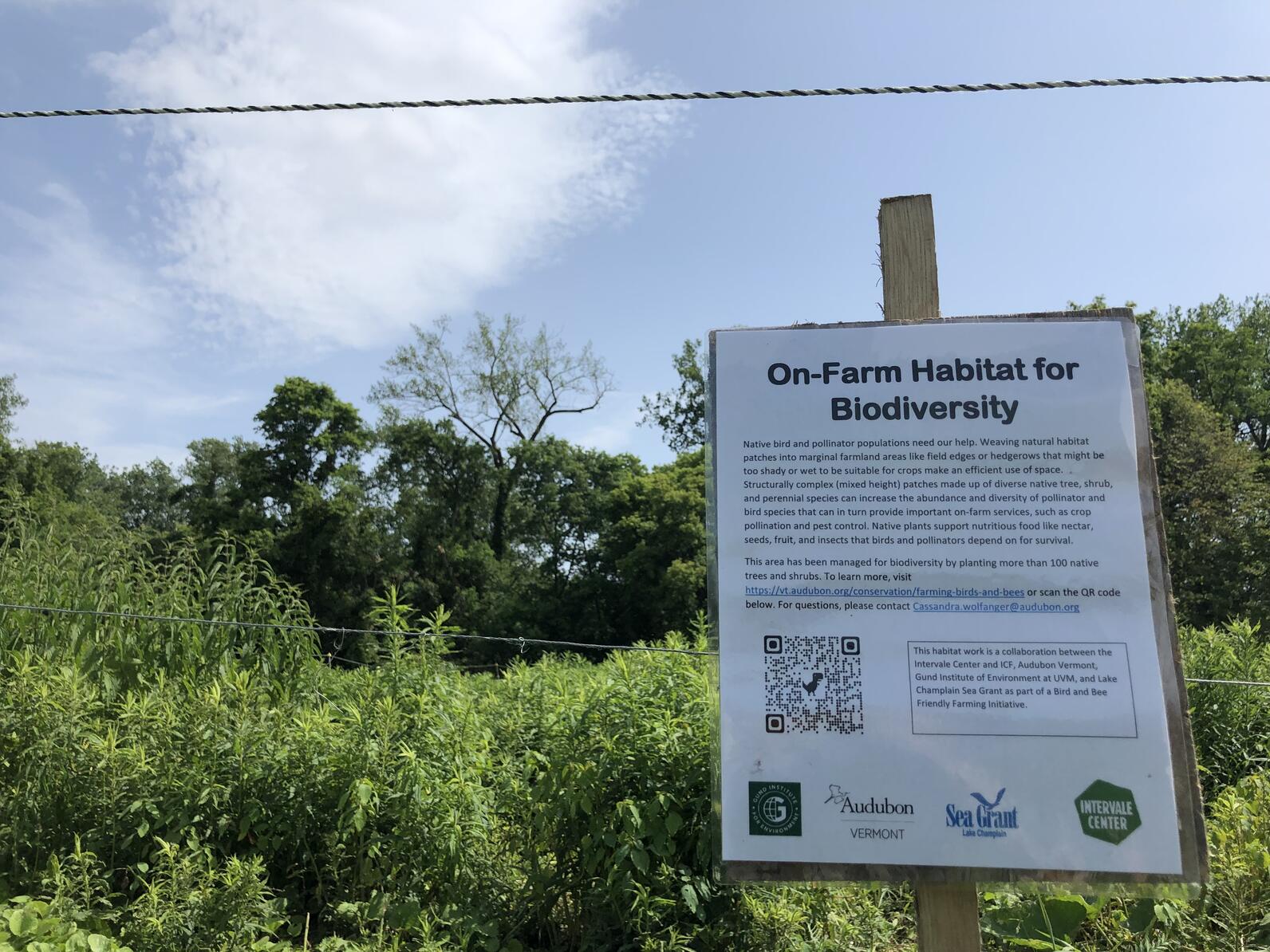
The Intervale Center has an incredible volunteer base of community members and corporate groups, which brings people power to many projects and this one was no exception. Ursa Major skin care volunteers harvested and planted native shrub willow whips to line the perimeter of the planting site. One Tree Planted sponsored the bare root stems for the interior of the planting, which were naturally acquired from the Intervale Conservation Nursery.
Inspired by suggestions of Audubon Vermont and Gund, stems were planted in clusters of one tree, surrounded by nine shrubs, interspersed in islands approximately 30 feet by 30 feet, with even rows to allow ease of maintenance mowing between patches in the late season. Clusters closest to production fields were only planted with shrubs, so crops would not be shaded when the plantings mature. Among shrubs selected were Buttonbush, Elderberry, Red Osier Dogwood, Arrowwood, Nannyberry, Aronia, Silky Dogwood, and Chokecherry. Trees included Grey Birch, Swamp White Oak, Silver Maple, and American Elm.
All of these native plants are excellent choices for nectar, fruit, or hosting high numbers of caterpillars that are essential for feeding growing nestlings. Being on a floodplain with some of the most productive soils for farming, I overheard volunteers say the Intervale was the loveliest soil to dig in and actually a pleasure to plant, without rocks and without heavy clay they’ve encountered in other projects.
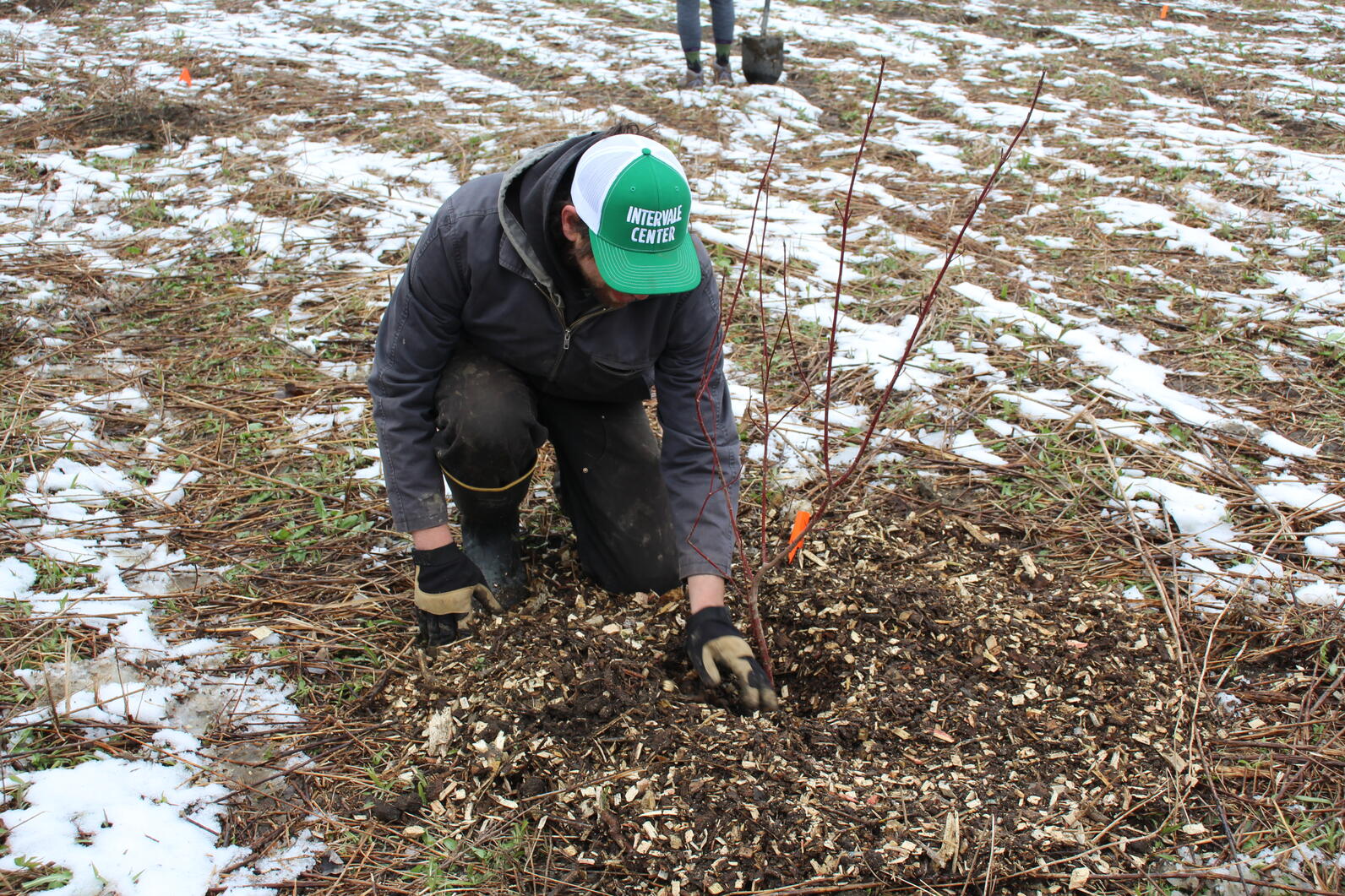
Not all projects happen so serendipitously, but in the occasional instance where all the moving parts for location, funding, design, stems, and volunteers all align, there feels a need to celebrate when it all works out nicely. When asked what feelings it brings to see the habitat planted, Duncan replied “It’s heartwarming and meaningful,” while Hilary replied “We love that so many people made personal connections with the land by planting. This place truly connects and supports so many of us.”
Another planting of 100 stems went in the ground in early June in a field margin at the Intervale Community Farm with help from volunteers at the Lake Champlain Chamber. Next, plans include expanding the riparian buffer zone along some parts of the river trail and installing American Kestrel nest boxes. There is always more work to do.
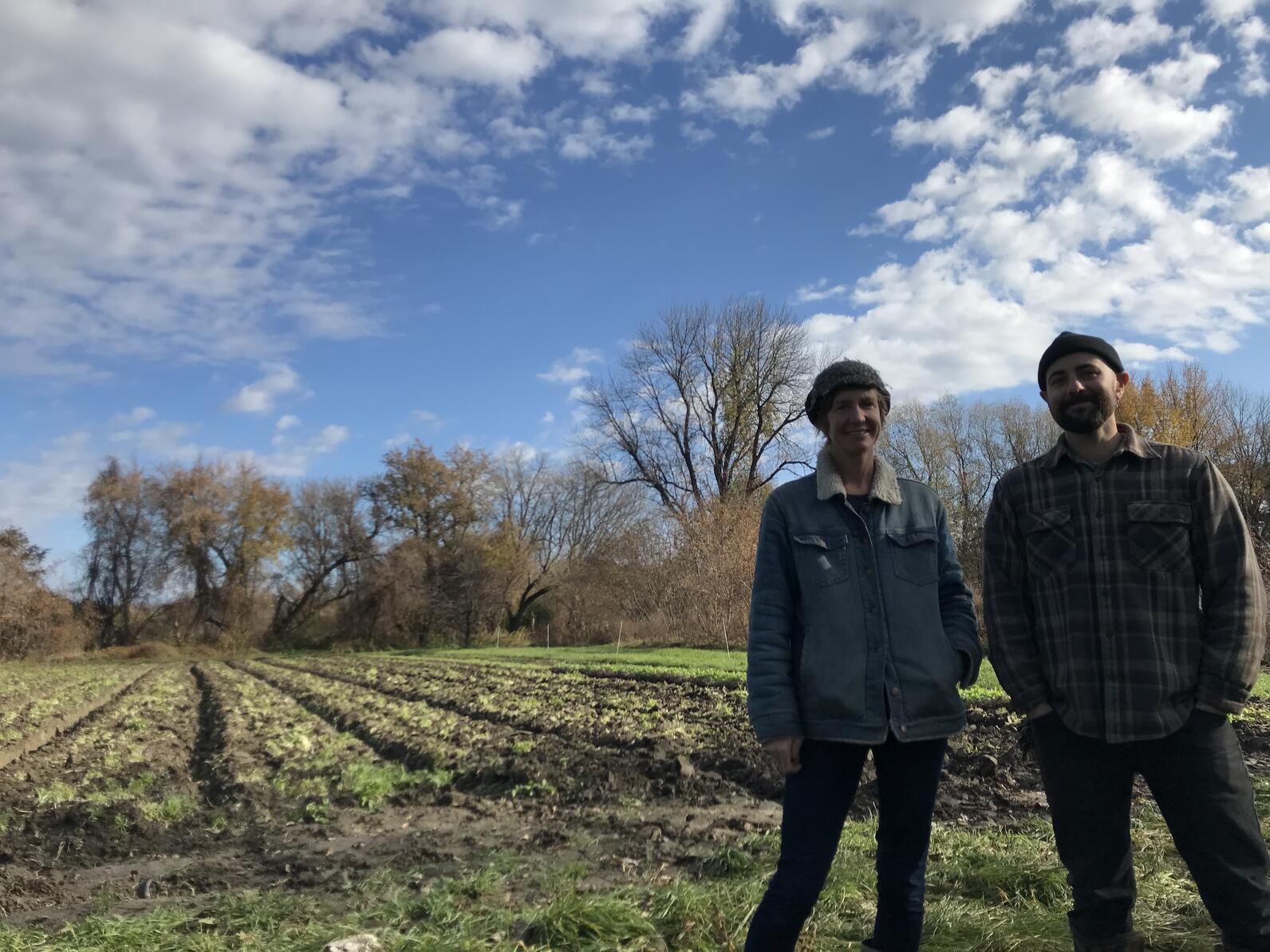
To read a copy of the full Bird and Bee Friendly Farming Recommendations Report for the Intervale Center and Farms, click here.
This article was originally published in the Vermont Watershed Forestry Partnership Spring 2022 Newsletter. You can read the full newsletter here.

